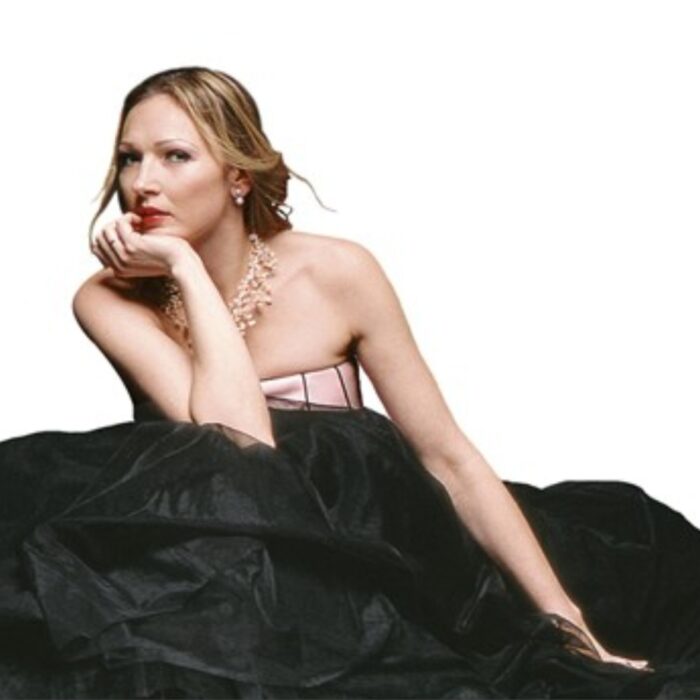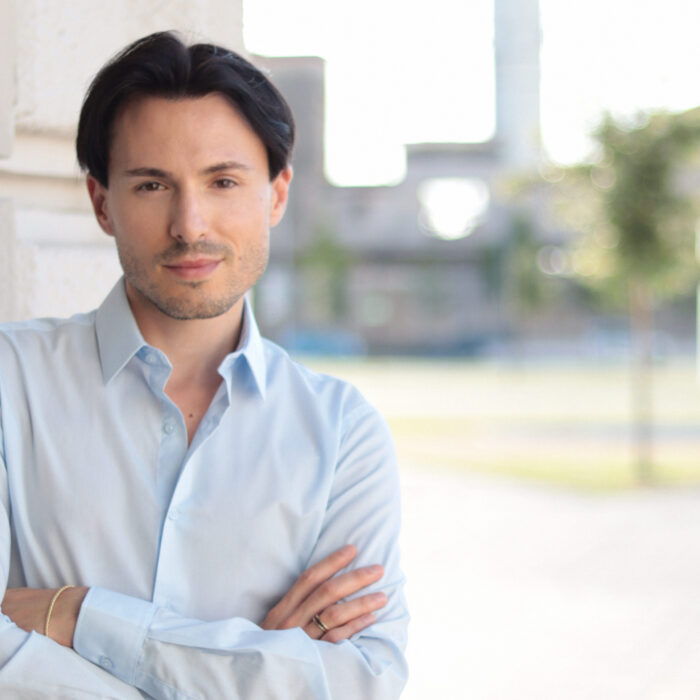
Q & A: San Francisco Conservatory of Music Voice Chair César Ulloa On the Art & Craft of Voice Instruction
By Lois Silverstein(Credit: Valentina Sadiul)
What makes a master singing teacher? Is it someone who knows the art of singing from both sides of the curtain? Or is it someone who cultivates a singer’s natural gifts, enabling the budding artist to bring out her/his inner voice? Perhaps it is both of these.
César Ulloa is Voice Department Chair at the San Francisco Conservatory of Music, a private music school with a student population of 460 situated within the heart of San Francisco’s cultural center. In addition to working with countless students at SFCM, Ulloa has taught for the past 24 years in Europe, Canada, Mexico, China, Israel, and Italy. Over the last 14 years, he has held the position of Master Teacher at the San Francisco Opera Center’s Merola and Adler Programs.
Ulloa travels abroad to attend his students’ performances, showing his commitment even after they have established international careers. Singers such as Nadine Sierra, Julie Adams, Daniela Mack, Pene Pati, Eleazar Rodríguez, Robert Watson, and AJ Glueckert continue to work with him.
Merola and Adler alumna Daveda Karanas has called César Ulloa the “voice whisperer,” saying, “César is extremely attuned to the voice and all its possible capabilities. He is able to hear the smallest problem and immediately tries to figure out the best possible solution. His vocal exercises are specifically geared toward each individual voice and its corresponding repertoire. His exercises help strengthen, tone, shape, and build a better vocal instrument.”
Recently, OperaWire spoke with Ulloa about his career path and the art and craft of voice instruction.
OperaWire: What led you into singing?
César Ulloa: My career as a voice teacher began by becoming an opera singer myself. I only came to that through studying and playing the trumpet after I planned to pursue a career in the medical field. I was born in Cuba, escaped Castro’s regime in 1960 and moved to Spain. I emigrated to New York, and six years later moved with my family to Texas.
When I learned that the instrumentalists in the school orchestra were not going on tour, but the choir was, I decided I wanted more than anything to go on tour, too. So, I auditioned, got accepted, and went off with the group. I loved it, both the singing and the touring.
When I attended Southern Methodist University, studying pre-med, I began taking voice lessons with Metropolitan Opera tenor Thomas Hayward. He encouraged me to go a step further. He urged me to audition for the Dallas Opera chorus.
From there, it was a natural step not only to listen to opera more and more and be around as a chorister with some of opera’s greats—Alfredo Kraus, Marilyn Horne, Franco Corelli, Jon Vickers, and, of course, the magnificent Montserrat Caballé—but also to venture into that world of singing myself. Maestro Nicola Rescigno plucked me out of the chorus and gave me my first opportunity to actually be on stage and perform in “La Traviata” in a small role opposite Beverly Sills. Many years later, I had the pleasure of seeing Ms. Sills again when I made my debut at the New York City Opera as Don Basilio in “Le Nozze di Figaro.”
OW: What was your climb into the opera world like?
CU: I had the fortune of having from the start a very supportive and amazing voice teacher, Thomas Hayward, who was always there for me, as well as three other exceptional mentors I called my “support team:” Joan Dornemann, Jane Klaviter, and conductor and impresario Boris Goldovsky. Both Ms. Dornemann and Ms. Klaviter worked at the Metropolitan Opera and taught me every role that I know.
I was First Prize Winner in the American Opera Auditions and was also awarded a professional career grant for three consecutive years from the Sullivan Musical Foundation in New York City, which I used for role preparation, language classes and dramatic coaching. I was also very lucky to have been chosen to join a small selected group of singers to work with Marilyn Horne, Franco Corelli, and Jerome Hines in an intensive opera program—New Jersey Opera Theater.
The scholarship they offered helped me pay for my living expenses in New York for two years. Both Marilyn Horne and Franco Corelli continued to help me for many years and actively encouraged me to keep at it. During my fifteen years as a professional singer, these extraordinary singers helped me to grow into the tenor and teacher that I became.
OW: Tell us about your singing career: what you sang, where, and with whom.
CU: The first role I sang was Ferrando in Mozart’s “Così fan tutte,” and then I went on to sing over 50 roles, including leading and character roles, performing under the baton of such prominent conductors as Zubin Mehta, Leonard Slatkin, Henry Lewis, Seiji Ozawa, James Levine, Richard Bonynge, and Eduardo Müller, among others.
After my last season covering roles at the Metropolitan Opera, I began to think more about teaching. In fact, my mother, who kept an ongoing account of my career activities, kept a newspaper clipping about me from right after high school where I said that I wanted to teach voice above all. I was surprised when I found it. I didn’t remember saying that, but there it was in black and white. In fact, after traveling for 15 years and performing happily, I realized that I wanted to go into a teaching role full-time. In 1994, I decided to take on this long-desired position.
OW: What do you focus on when teaching? What do you look for and how do you reach out to a student?
CU: A healthy voice for me is a voice that is flexible and able to move throughout its entire range with ease. Breath management is one of the most important aspects in achieving good vocal technique.
In my lessons, I concentrate on removing tension from the throat, tongue, and neck muscles to maximize the relationship between the breath and the tone produced. The initial vocal attack or “onset” needs to be correct from the beginning, as well as the release of the breath; these are both things that I make a priority in my teaching, and of course, clear vowels are of the utmost importance. I must always be creative because the language that I use for one singer doesn’t necessarily work for another.
OW: How do you know you will mesh with a student, and whether the student can benefit from what you have to offer?
CU: I get a sense of this from their opening auditions. Many are young—18 when they come to SFCM—and while they may have a good instrument, they need to develop a comfortable, natural and solid technique. I am always very honest with them, and I make sure that they understand what their strengths and weaknesses are, as well as guiding them with the repertoire that is best suited to their particular voice type. This saves them a lot of time as they move through their career path.
I always say that if you don’t sing the right repertoire the career will most likely not happen. Singing the wrong repertoire, whether it’s too big or too light for them, not only can create unnecessary tension in the voice but also can shorten the longevity of their careers.
When I listen to prospective students that come to the conservatory to audition, I not only listen to the quality of the voice, but also look to see if they have something to communicate. Are they musical and expressive? Do they have imagination and bring something special to their song or aria they sing? This is very crucial for me when hearing singers.
OW: What’s required of the student in the student-teacher relationship?
CU: The student is trusting you with his or her whole self, their whole being, and if you don’t commit to her or him and if they don’t believe you have their best interests at heart, they will not get anywhere. The student has to understand your language and your personality. You have to be compatible. The student is vulnerable and must be open to what you have to give.
OW: And what of your own singing now?
CU: I warm up my voice every morning before I come to the conservatory so that I can be prepared in case I need to demonstrate for my students. Usually, I don’t sing very much in my lessons because I do not want my students to imitate my sound. I mostly sing for them to show them what it sounds like when the root of the tongue retracts and obstructs the airflow affecting the resonance.
You never stop learning. That’s one thing that mattered to me as a young student and singer: I wanted to learn, and I still do. I try to transmit that to my students. I love what I do. The SF Conservatory of Music is a great place to work and, for singers, an excellent place to create their musical lives. I look forward to many more years of teaching because I am as happy now teaching as I was when I was on stage performing.



